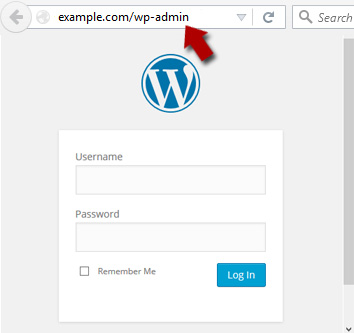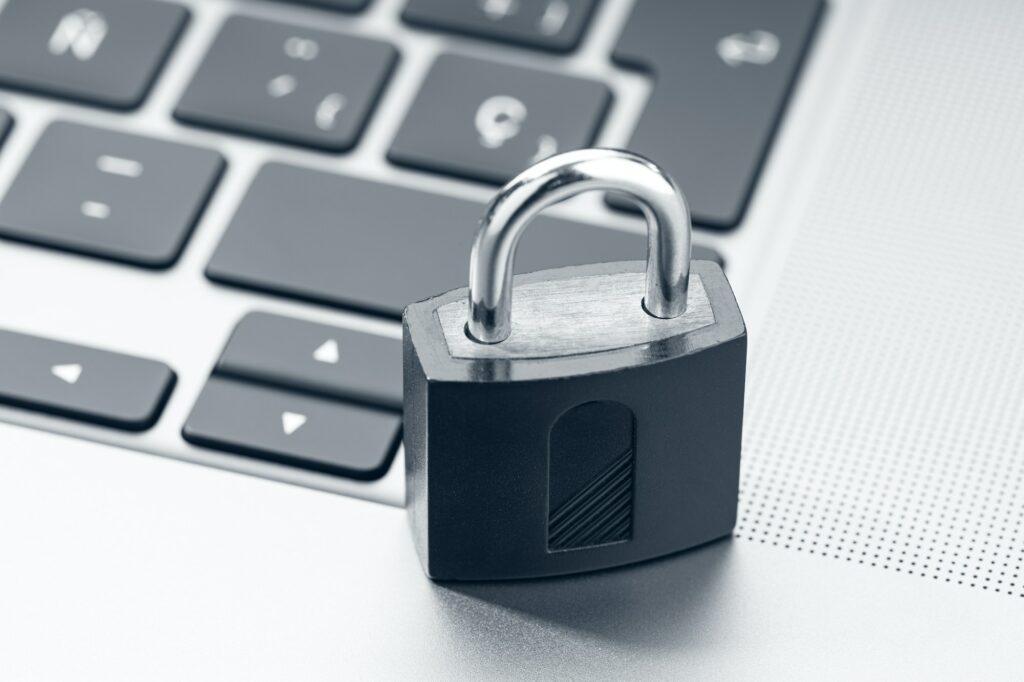WordPress is one of the most popular content management systems (CMS) in the world, powering millions of websites and blogs. While it offers a wealth of features and benefits, it’s important to be aware of the potential security issues that can arise when using WordPress. In this article, we’ll explore some of the common security threats to WordPress websites, and provide tips on how to ensure your WordPress site is safe.
WordPress is a popular content management system (CMS) that powers millions of websites. However, its popularity also makes it a target for hackers. In this blog post, we will discuss several ways to keep your WordPress site from being hacked.
Stay On Top Of Updates
The first and most important step in securing your WordPress site is to keep all software up to date. This includes the core WordPress software, plugins, and themes. Hackers often exploit security vulnerabilities in outdated software, so it is important to keep everything updated to the latest version.
- Plugins and themes: As soon as new updates become available, it is recommended to update your plugins and themes. This will ensure that your site is running the latest, most secure version of the software. You can update your plugins and themes directly from the WordPress dashboard or by using a plugin such as Easy Updates Manager.
- Remove unused plugins and themes: If you have plugins or themes installed that you are not using, it’s best to remove them. Not only do they take up space on your server, but they also add an extra layer of security risk.
- Check for vulnerabilities: It’s a good practice to check for vulnerabilities in the plugins and themes that you are using. There are several online resources such as WPScan Vulnerability Database, where you can find information on known vulnerabilities in WordPress plugins and themes.
- Be aware of popular plugins and themes exploits: While most plugin and theme authors quickly release updates to fix known vulnerabilities, some exploits may go undetected for some time. For example, in the past, popular plugins such as Gravity Forms, Yoast SEO, and WPForms were found to have vulnerabilities that were exploited by hackers.
- Use only trusted plugins and themes: It’s important to only use plugins and themes from trusted sources. Avoid downloading plugins and themes from untrusted websites as they may contain malware or other malicious code. Only download from the official WordPress plugin and theme repository.
- Update your server environment: If you are using a VPS, you should also keep your server environment up to date. This includes the operating system, web server software, PHP version, and any other software that is running on the server. Many VPS providers offer automated updates for the server environment, but it’s always a good practice to check for updates and apply them manually.
- cPanel and other web managers: If you are using cPanel or other web management software, make sure to keep it up to date as well. These tools often have security vulnerabilities that need to be patched and you can use the tool itself or the server environment to update these tools. Once a hacker has gained access to a cPanel account, it can be difficult to detect because the hacker can cover their tracks by deleting log files, disabling monitoring tools, or creating new accounts with different login information. Additionally, it can be difficult to remedy because the hacker may have already propagated malware or other malicious code throughout the account, making it difficult to remove.
Use strong passwords + 2FA

Another important step in securing your WordPress site is to use strong passwords. A strong password should be at least 12 characters long and include a mix of letters, numbers, and special characters. Avoid using common words or phrases, and don’t use the same password for multiple accounts. It’s important to avoid patterns or words that contain your brand, sitename, or (I can’t believe I have to say this…)_”Password”. If you are worried about forgetting your password utilize a password manager tool like lastpass or 1password.
In combination with a strong password its best practice to implement some sort of Two Factor Authentication (2FA). With 2FA, a user is required to provide a second form of authentication in addition to their password, such as a code sent to their mobile phone or a third party application like Google Authenticator. This makes it more difficult for hackers to gain access to the account, even if they have the correct password.
Change Admin Users Display Names
A common tactic used by hackers is to try to guess your login information based on your display name. By default, WordPress uses the display name as the login username. To prevent hackers from easily obtaining any of your login information, change your display name to something that does not match your login username and as a best practice avoid common user names like “Admin”, or “WordPress”.
Change the login URL for the WordPress site

Changing the login URL for your WordPress site is an essential step in securing your website. By default, WordPress has a default login URL that is easy to guess, making it a prime target for hackers who use automated tools to repeatedly try different username and password combinations in order to gain access to your site. This is known as a brute force attack, which can consume a large amount of your hosting resources, slowing down your site and making it unavailable. Changing the login URL can help prevent this from happening.
Customizing the login URL can be done by using a plugin such as WPS Hide Login or by following this guide which will allow you to change the login URL to something more difficult to guess. This process is known as obfuscation, and it makes it more challenging for hackers to discover the login page, and therefore, more difficult for them to launch a brute force attack on your site.
Additionally, some advanced protection that some plugins offer include blocking IPs after a certain number of failed login attempts, and hiding the login error messages for non-existent users, this makes it difficult for hackers to determine if a username is valid or not. This can provide an extra layer of security to your website, making it more difficult for hackers to gain access.
However, it is important to note that once you change the login URL, make sure to keep it secret and only share it with trusted users. This way you can ensure that only authorized personnel have access to your website’s backend.
Another tactic used by hackers is to try to access your login page by guessing the URL. By default, the login page for a WordPress site is located at /wp-login.php or /login. To prevent hackers from accessing your login page, you can change the URL to something else. This can be done by using a plugin such as WPS Hide Login or by modifying your site’s .htaccess file.
Cloudflare For DNS Management

Cloudflare is a popular service that can help protect your site from a variety of threats, including DDoS attacks, malware, and spam. By using Cloudflare to manage your DNS, you can add an extra layer of security to your site. Cloudflare also offers a free plan that includes basic DDoS protection and a content delivery network (CDN). Here are some Cloudflare settings and configurations that I strongly recommend you implement for your WordPress site:
- Proxied IP address for the server: By default, Cloudflare will mask your server’s IP address and replace it with a Cloudflare IP address. This can help protect your server from DDoS attacks and other malicious traffic.
- Authenticated origin pulls: By enabling authenticated origin pulls, you can ensure that only Cloudflare is able to access your origin server. This can help prevent unauthorized access to your server and protect it from attacks. To learn how to configure authenticated origin pulls read this guide.
- Use Cloudflare’s firewall: Cloudflare’s firewall allows you to block malicious IPs, create custom firewall rules, and set up rate-limiting to prevent DDoS and other types of attacks.
- SSL/TLS: Cloudflare offers a free SSL/TLS certificate, which encrypts all data passing between your site and the visitors’ browser. This can help prevent eavesdropping and man-in-the-middle attacks.
- Use Cloudflare’s security services: Cloudflare provides a range of security services that can help protect your site from different types of threats. These include DDoS protection, bot management, and security scanning.
- Use Cloudflare’s caching: Cloudflare can cache your website’s static content, such as images and stylesheets, on its global network of servers. This can help speed up your site and reduce the load on your origin server.
- Use Cloudflare’s content delivery network (CDN): Cloudflare’s CDN can help distribute your content across its global network of servers, which can help reduce the load on your origin server and improve the performance of your site.
By implementing these settings and configurations, you can greatly enhance the security and general performance of your WordPress site and protect it from various types of threats.
Security plugins
Security plugins like Defender by WPMUDEV can provide a range of features that can help keep your WordPress site more secure:
- Scheduled File scanning and malware removal: this feature can scan your website’s files for known malware and other malicious code, and remove any threats that are found. These plugins also include a quarantine feature that can be used to isolate potentially harmful files.
- Two-factor authentication: As mentioned before, two-factor authentication (2FA) can add an extra layer of security to your WordPress site. Most security plugins will provide 2FA options that can be used to secure your site’s login page, as well as other sensitive areas of the site.
- Login lockdown: Defender can be configured to lock out users who repeatedly enter the wrong login information, or use user names to login that do not exist. This can help protect your site from brute force attacks.
- Security hardening: Security plugins can apply a range of security measures to your website, including disabling file editing, disabling the plugin and theme editor, and hiding the WordPress version number.
- Event logging: Access a history / log of all events that occur on your website, including login attempts, file changes, and other security-related events. This can help you detect and respond to potential security threats.
By using a security plugin like Defender, you can greatly enhance the security of your WordPress site and protect it from a wide range of threats. These features can help you keep your site secure by detecting and removing malware, blocking malicious traffic, and providing additional layers of protection.
Regular Backups
Regularly backing up your website is important in case your site gets hacked. There are several plugins available that can automate the backup process, such as UpdraftPlus and BackUpWordPress. By automatically scheduling backups, you can ensure that your site is regularly backed up, without the need for manual intervention. This can be done using a plugin such as UpdraftPlus, which allows you to set up automatic backups that occur on a schedule that you choose. This could be daily, weekly or monthly, it all depends on how often you update your site and how much data you are willing to lose in case of an emergency.
In conclusion, keeping your WordPress site secure requires a combination of different strategies. From keeping your software up to date, to using strong passwords, and taking advantage of security plugins, there are many ways to protect your site from hackers. By following the tips outlined in this blog post, you can help keep your WordPress site safe and secure.


